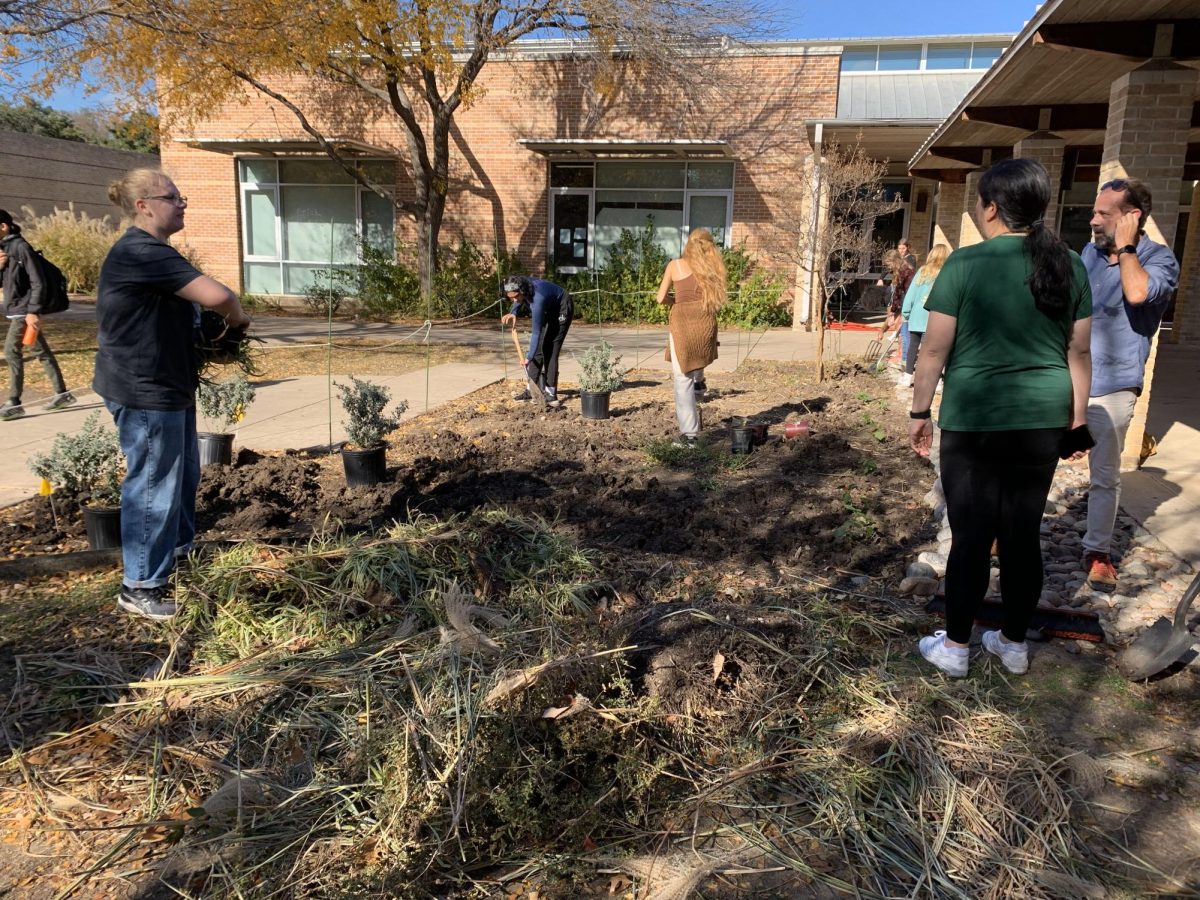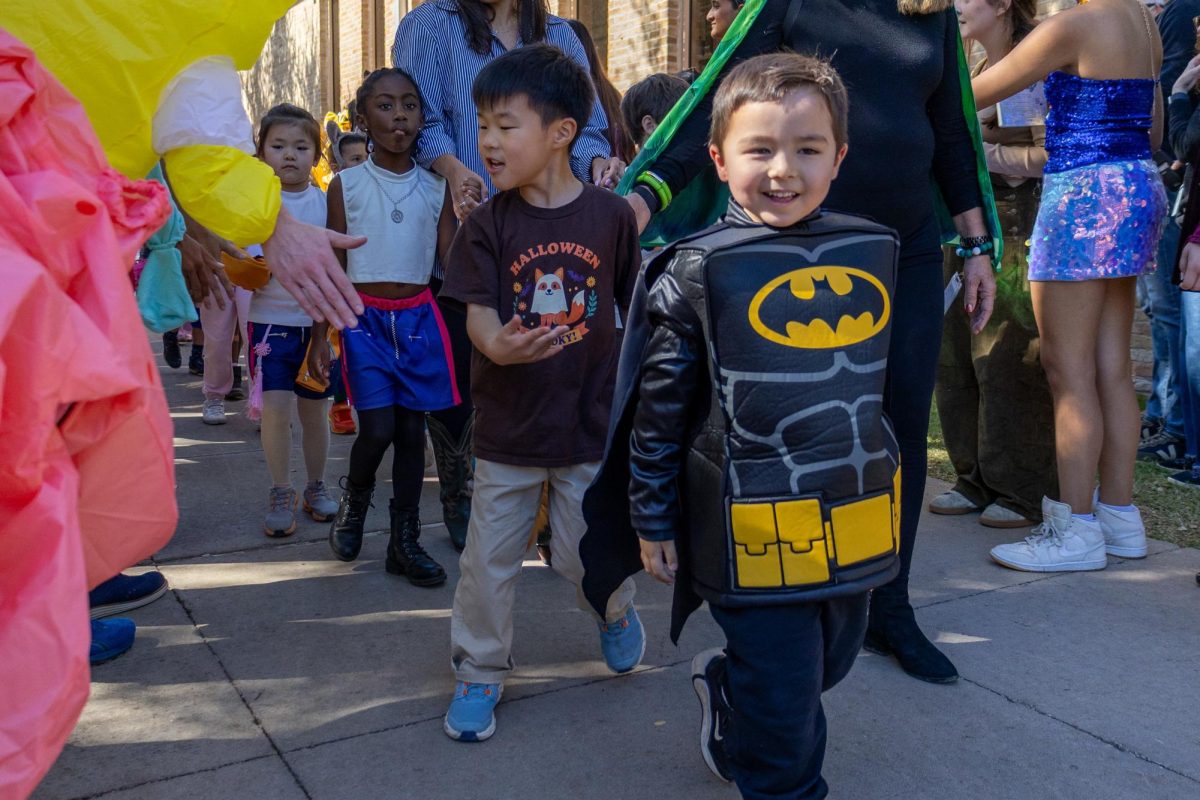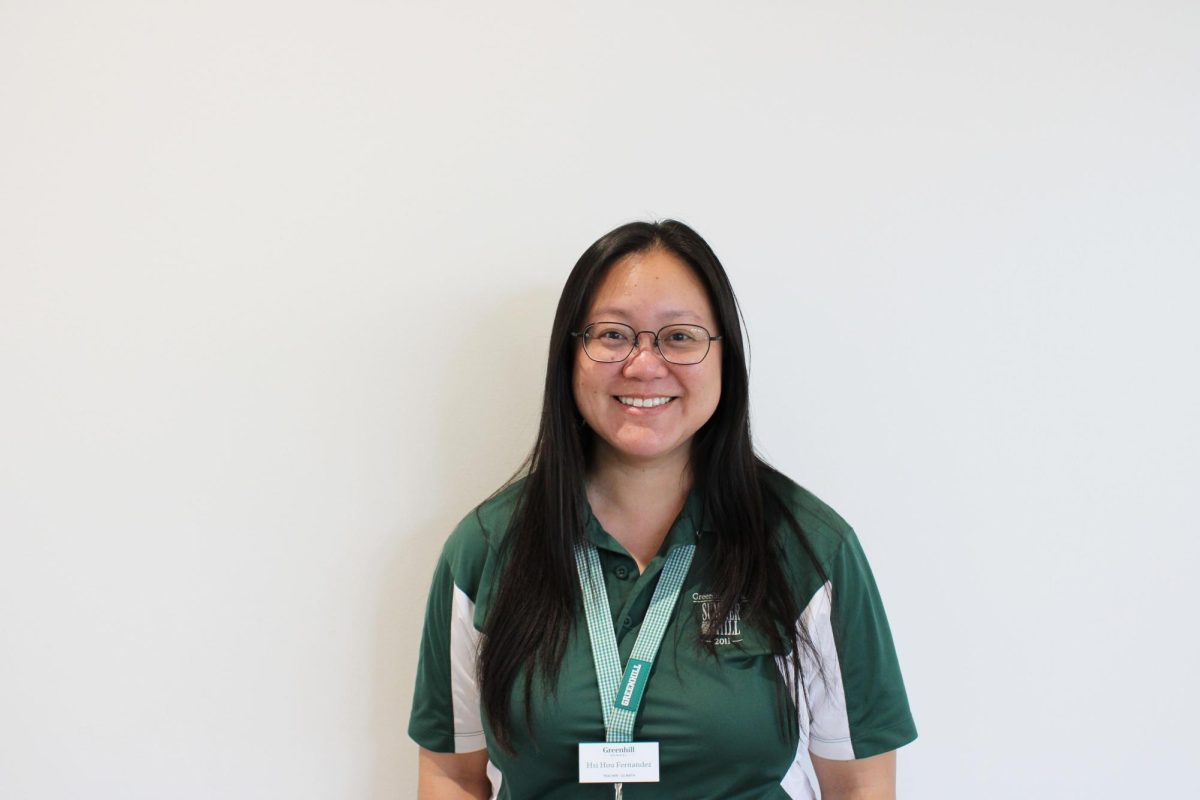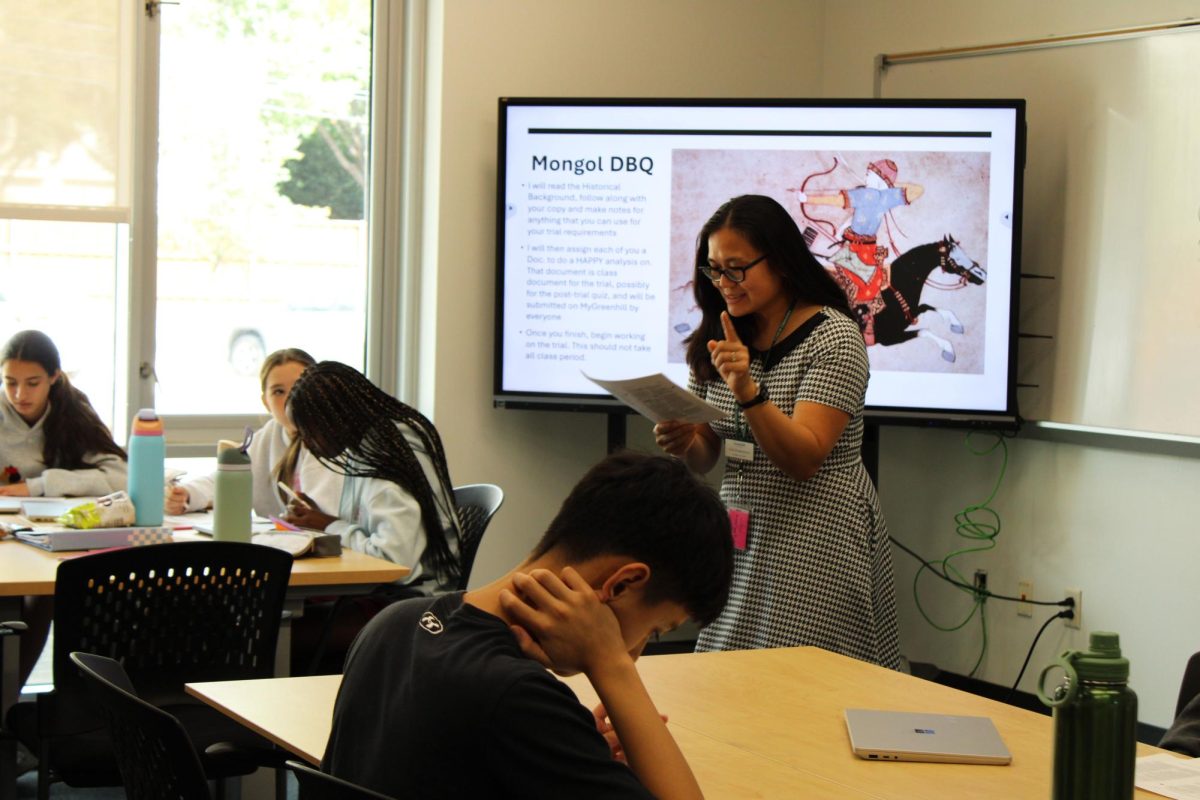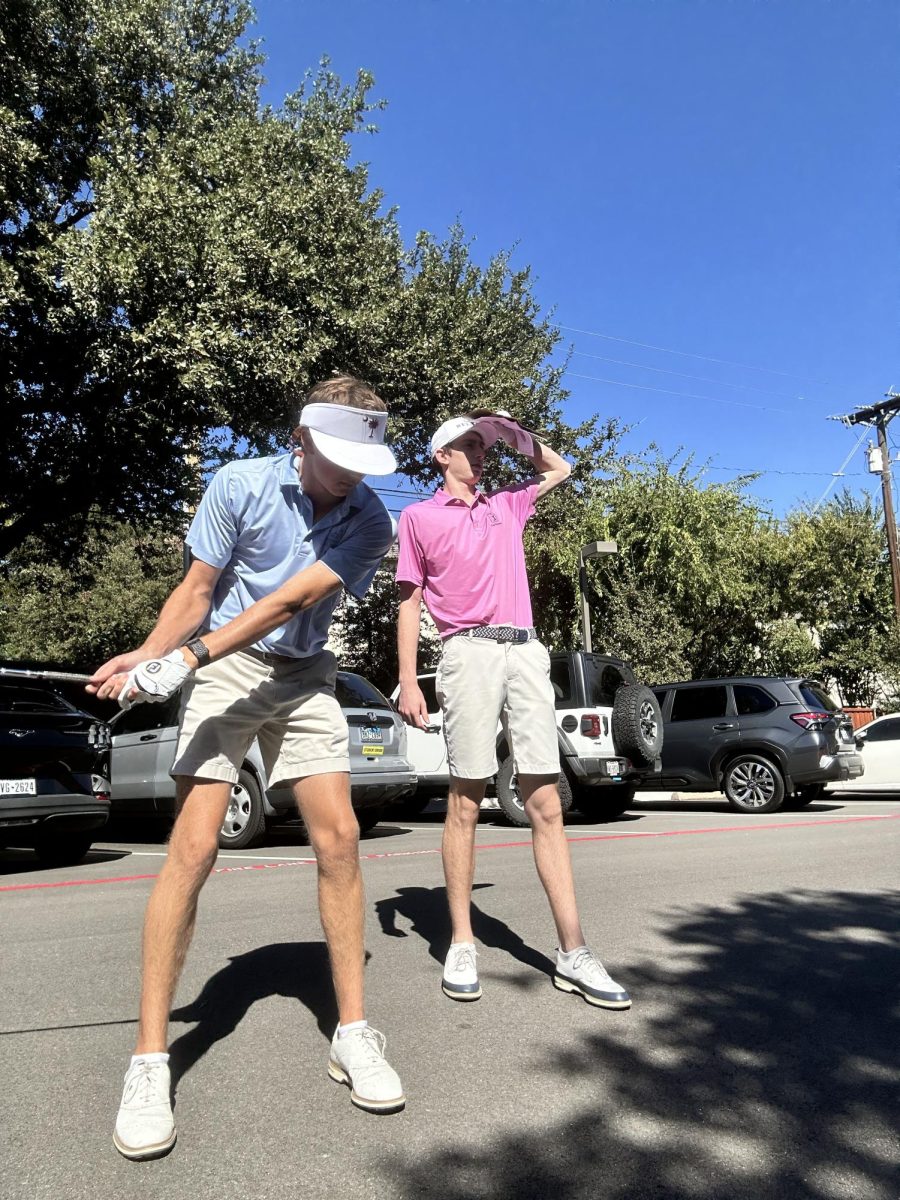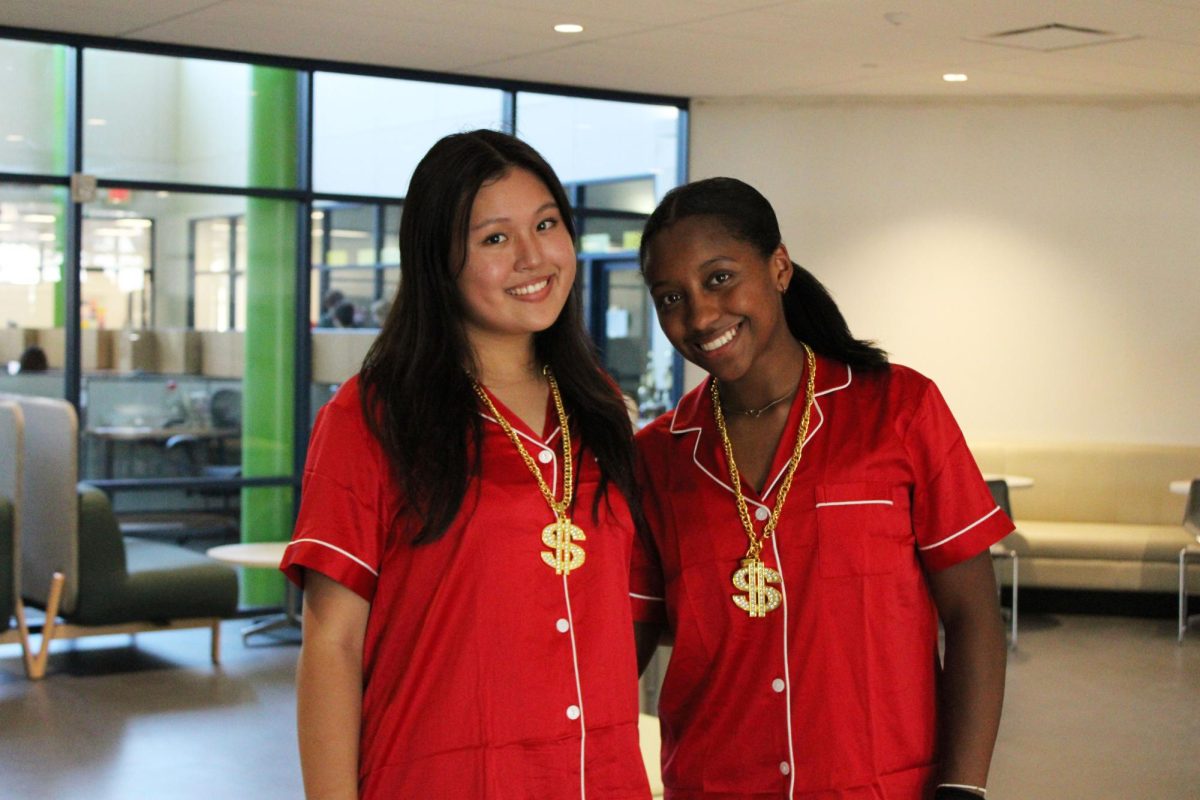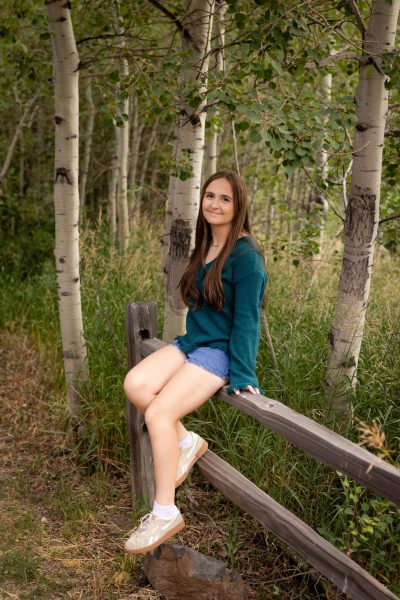On Wednesday, Dec. 7, the Community Service Board started a project to restore the land around campus back into a Blackland Prairie.
Students and teachers have been helping by digging up weeds and non-native plants and replacing them with plants normally found within the prairie in an effort to restore the endangered Blackland Prairie region.
Middle School science teacher Gretchen Pollom is pushing for progress on school grounds. She says her goal is to transform about one acre of land back into Blackland Prairie.
“I’m really passionate about the Blackland Prairie,” said Pollom. “It is one of the most endangered ecosystems in the United States.”
Pollom says that, on campus, most of the grass and nature are not native to the Blackland Prairies, so her goal is to try to transform patches of greenery into “pocket prairies.”
The soil in the Blackland Prairie region is hard and dry, causing plants to need thick, deep roots to thrive, however, Bermuda grass and winter rye, types of grass planted on campus, don’t take advantage of the soil.
“I think we have to rethink the way we engage with our environment,” said Pollom. “We have to share that space and bear it in a way that doesn’t damage it so that other species can’t survive.”
The project initially started with the pollinator garden near the Marshall Family Performing Arts Center, where an area in the parking lot was converted into a garden growing produce and other vegetation.
Upper School English teacher Trey Colvin has also been working on the project since this past summer, as the project started as an on-campus summer enrichment project.
“Mrs. Pollom and I are both Master Naturalists,” said Colvin. “The idea grew out of that.”
With Colvin directing the project, it started out by using parent volunteers over the summer, where they would dig up plants and weeds from areas and replace them with native wildlife in those areas.
However, once school started, students became involved with the project.
“It’s just always been a passion of mine,” said Colvin. “When we figured out that we had support here at school, we could definitely do this.”
The project is supposed to be in full swing by spring 2024, with the “pocket prairies” fully grown by then.
“We’ve planted a whole bunch of stuff around school, it’s going to look amazing,” said Pollom.

